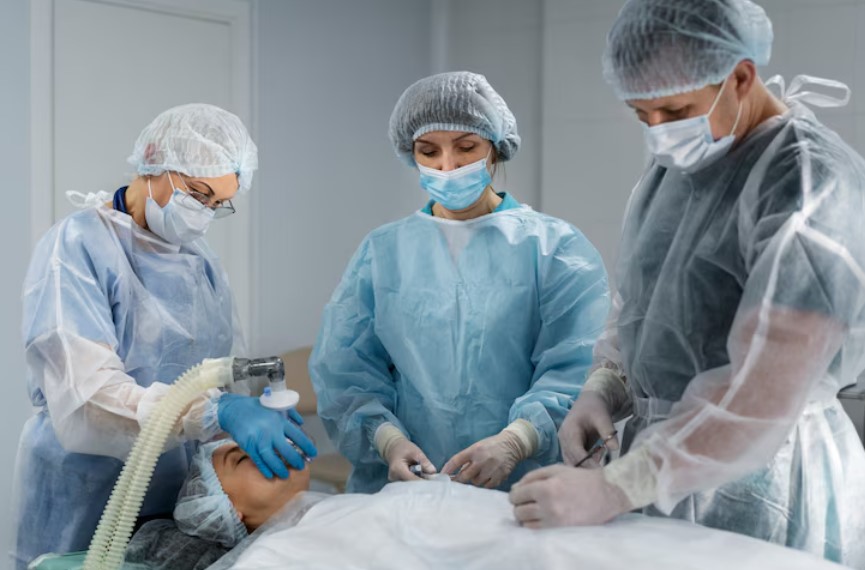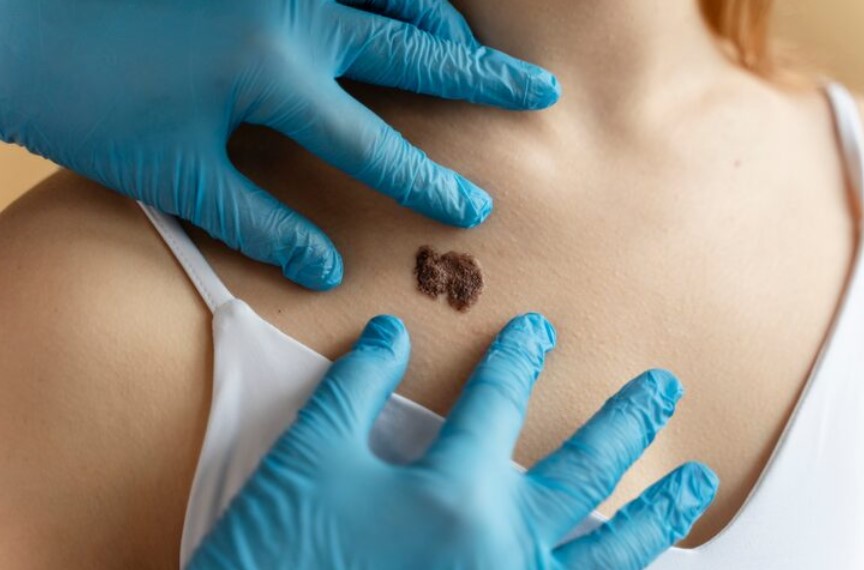01
Nov 2024
Hair Transplants in Hospitals: Why Women Are Turning to This Life-Changing Procedure
Published in General on November 01, 2024

For years, hair transplants have been associated almost exclusively with men. It’s the classic solution to male-pattern baldness or a receding hairline. But recently, women in the UK are increasingly seeking out this once male-dominated treatment to tackle their hair-related issues. Female hair loss, thinning, and even damage from years of over-styling have driven more and more women to explore the option of hair transplants, and it’s not just a niche market anymore. What was once taboo is now becoming a normalized and empowering choice for women nationwide.
Why the sudden surge in popularity? A mix of changing societal norms, improved technology, and a growing understanding that hair loss is not exclusive to men are all contributing factors. Women are discovering that they, too, can take control of their appearance and self-confidence by addressing their hair concerns through transplantation.
The Changing Face of Hair Transplants
Historically, hair transplants were considered a “male-only” domain. Men, especially those in the public eye or in highly competitive fields, often turned to these procedures to restore their confidence. However, as technology has advanced and the stigma surrounding hair loss has decreased, women have become part of the clientele.
Daniel Corner, director of the My Hair UK healthcare group, said, “Women have long been underserved when it comes to hair restoration. Hair is often a huge part of a woman’s identity, and it’s about time that women started to see hair transplants as a viable option for themselves.”
For many women, getting a hair transplant is deeply personal. Hair can play a crucial role in a woman’s self-image, and losing it can be emotionally challenging. This is why the ability to restore their hair—and, by extension, their confidence—has become an increasingly attractive option for women facing hair loss or thinning.
Why Are Women Getting Hair Transplants?
One key reason hair transplants have gained popularity among women in the UK is that hair loss affects women just as much as men, albeit in different ways. Female hair loss can occur for various reasons, including hormonal changes (especially around menopause), genetics, stress, and even lifestyle factors like diet or overuse of heat and chemicals in hair styling.
The emotional impact of hair loss can be severe. For many women, their hair is a big part of their identity and femininity. Hair loss can feel like a betrayal, eroding self-confidence and even impacting mental health. Hair transplants allow women to regain control over this aspect of their appearance, which can profoundly affect their overall sense of well-being.
The stigma around female hair loss is also beginning to fade. Celebrities and influencers have played a part in normalizing the conversation around hair loss and restoration. As more women publicly share their experiences, others feel empowered to explore hair restoration options, knowing they’re not alone.
The Evolution of Hair Transplant Technology
Another reason more women are turning to a hair transplant in the UK is the massive leap forward in the technology used for these procedures. Older methods of hair transplantation, such as the strip technique, often left visible scarring and could result in unnatural-looking hairlines. However, modern procedures, especially those using Follicular Unit Extraction (FUE), allow for more natural, undetectable results.
The FUE technique involves harvesting individual hair follicles from the donor area (usually the back of the head) and transplanting them into the thinning or balding areas. This method minimizes scarring and downtime, making it much more appealing to women who want a discreet and effective solution. Additionally, with the introduction of tools like sapphire blades, the precision and success rate of the procedure have improved dramatically.
Another advanced treatment gaining popularity is platelet-rich plasma (PRP) therapy. While not a transplant in itself, PRP injections involve drawing a small amount of the patient’s blood, processing it to concentrate the platelets, and then injecting it back into the scalp. This process stimulates hair growth and can complement transplant procedures, making it ideal for women looking for less invasive options or boosting their transplant results.
These advancements mean that the results are more natural than ever before, which is a significant selling point for women who may be hesitant about looking “fake” or having obvious surgery.
Popular Transplant Areas for Women
Unlike men, who primarily seek hair transplants to address receding hairlines or balding crowns, women often have different goals for their procedures. The most common area women target for hair transplants is the hairline, especially when it starts to thin or recede due to age or genetics. However, women also frequently opt for transplants to address thinning throughout the scalp, which can result from hormonal changes or stress.
Eyebrow transplants are another popular option among women. Fuller, well-shaped eyebrows are in vogue, but not everyone has naturally thick brows. Years of overplucking or even just genetics can leave women with thin or patchy eyebrows. Transplants offer a permanent solution, allowing women to regain a fuller, more defined look without relying on makeup or microblading.
Interestingly, some women are even getting transplants to fix hair damage caused by years of chemical treatments, such as perms, bleaching, or overuse of hot tools. Transplanting healthy hair follicles into areas that have suffered damage from these treatments can help restore hair density and quality, allowing women to reverse the effects of over-styling.
Costs and Accessibility
As hair transplants have become more popular with women in the UK, they have also become more accessible and affordable. While the cost of a hair transplant will depend on factors like the clinic, the experience of the surgeon, and the extent of the hair loss, prices have become more competitive due to higher demand. This means that women who may have been priced out of the market in the past are now able to explore hair transplants as a viable option.
It’s also worth noting that many clinics now offer financing options, which can make the procedure more affordable by allowing patients to pay in instalments. This is another reason why hair transplants are becoming increasingly popular with women—affordability and flexible payment plans mean that more women can pursue the procedure without the upfront financial strain.
The Emotional Impact
For many women, hair transplants are more than just a cosmetic procedure—they’re a life-changing experience. Hair loss can have a significant emotional impact, leading to low self-esteem, anxiety, and even depression. By restoring their hair, women often feel as though they’ve regained control over their appearance, boosting their confidence and emotional well-being.
This emotional transformation is one of the most compelling reasons women turn to hair transplants. It’s not just about looking good; it’s about feeling good. When women feel more confident in their appearance, it can ripple effect on other areas of their lives, from their careers to their relationships.
As Daniel Corner puts it, “Hair is such a central part of how we see ourselves. For women who have been struggling with hair loss, getting a transplant can be a deeply empowering experience. It’s about reclaiming their sense of self.”
Breaking the Taboo
Another factor driving the surge in hair transplants for women is the breakdown of the stigma around cosmetic procedures. In the past, there was a certain level of embarrassment or shame associated with undergoing a hair transplant, especially for women. It was often viewed as a vanity procedure, and women who sought out hair transplants might have felt judged for it.
Today, however, that’s changing. Cosmetic procedures have become more mainstream, and women are more open about the treatments they undergo. This openness, particularly among celebrities and influencers, has helped normalize hair transplants and made it easier for everyday women to explore the option without fear of judgment.
In 2024, it’s clear that hair transplants are no longer just for men. More and more women in the UK are discovering the life-changing benefits of this procedure, from restoring their confidence to reclaiming control over their appearance. With advances in technology, increased affordability, and a growing acceptance of cosmetic procedures, hair transplants for women are only set to become more prevalent in the future.
Whether it’s to address hair thinning, hair loss, or even eyebrow restoration, women are embracing hair transplants to feel more confident and empowered. As societal attitudes toward beauty and cosmetic treatments evolve, more women will likely opt for this transformative procedure.
For those considering hair transplants, it’s also important to plan the logistics around the procedure, especially if it involves a hospital stay or extended recovery period. A guide to hospital stays accommodations can be a valuable resource for individuals seeking convenient and comfortable lodging options nearby. This can help streamline the recovery experience, allowing patients to focus fully on healing and achieving the best results from their treatment.








![“Surprise Noises Can Feel Like Pain”: New Airport Rule Eases Travel for Autistic Passengers Emma Beardsley once dreaded going through airport security. “I used to panic every time they made me take my headphones off at security,” she recalls. “The noise and the unpredictability can be overwhelming.” Now, thanks to a new policy allowing noise-cancelling headphones to remain on during security checks, Beardsley says she can “travel more confidently and safely.”
In Australia, one in four people lives with a disability, yet the travel system has often failed to accommodate varied needs. Autism-inclusion advocates at Aspect Autism Friendly have welcomed the government’s updated guidelines that let autistic travellers keep their noise-reducing headphones on during screening, calling it a “major step” toward more accessible air travel.
Dr Tom Tutton, head of Aspect Autism Friendly, emphasises the significance of travel in people’s lives: it connects them with family, supports work and learning, and offers new experiences. But he notes the typical airport environment can be especially intense for autistic travellers:
“Airports are busy, noisy, random and quite confusing places … you’ve got renovations, food courts, blenders, coffee grinders, trolleys clattering … and constant security announcements. It’s really, really overwhelming.”
“What might be an irritation for me is something that would absolutely destroy my colleague [who has autism]. Surprise noises of a certain tone or volume can genuinely be experienced as painful.”
Under the new policy — now published on the Australian Government’s Department of Home Affairs website — passengers who rely on noise-cancelling headphones as a disability support may request to wear them through body scanners. The headphones may undergo secondary inspection instead of being forcibly removed.
Dr Tutton describes this adjustment as small in procedure but huge in impact: it removes a key point of sensory distress at a critical moment in the journey. Aspect Autism Friendly is collaborating with airports to ensure that all security staff are informed of the change.
For many autistic travellers, headphones aren’t just optional — they are essential to navigating loud, unpredictable environments. Until now, being required to remove them during security has caused distress or even deterred travel.
Aspect Autism Friendly also works directly with airports, offering staff training, autism-friendly audits, visual stories, sensory maps, and other accommodations. Their prior collaborations include autism-friendly initiatives with Qantas. Dr Tutton notes:
“Airports have become this big focus for us of trying to make that little bit of travel easier and better.”
He advises people planning trips for travellers with disabilities to consult airport websites ahead of time. Some airports already offer quiet rooms or sensory zones — Adelaide, for instance, provides spaces where travellers can step away from the noise and regroup before boarding.
Beyond helping autistic individuals, Dr Tutton believes that more accessible airports benefit everyone. “These supports help lots of other people too,” he says. “When people are more patient, kind and supportive, the benefits flow to everyone. We all prefer environments that are well-structured, sensory-friendly, predictable and easy to navigate.”](https://c3eeedc15c0611d84c18-6d9497f165d09befa49b878e755ba3c4.ssl.cf4.rackcdn.com/photos/blogs/article-1061-1759742013.jpg)
